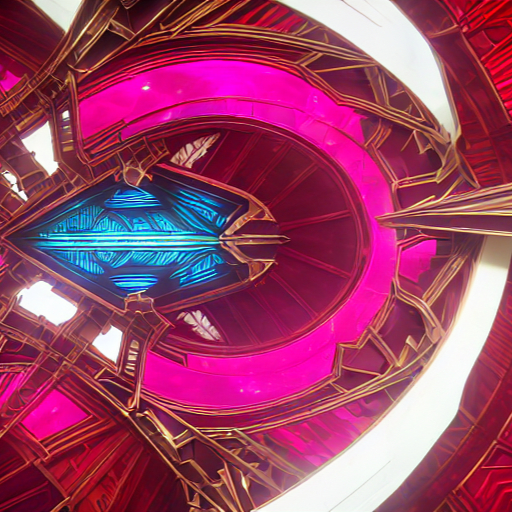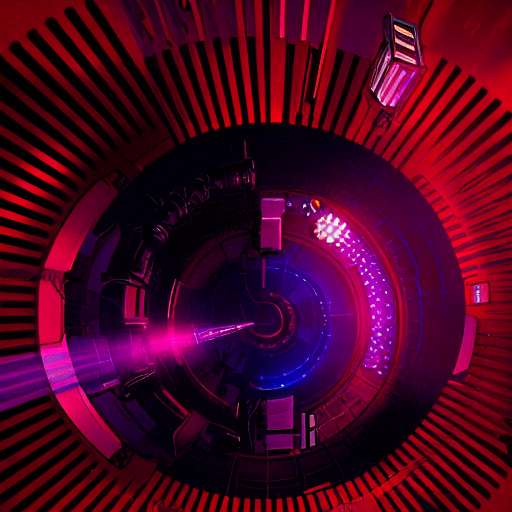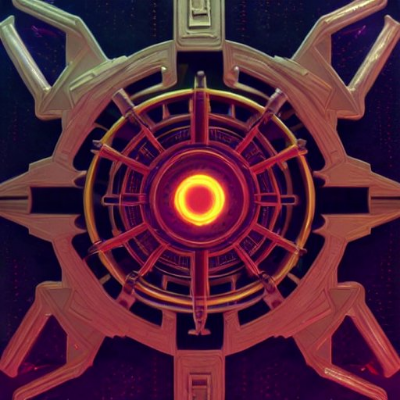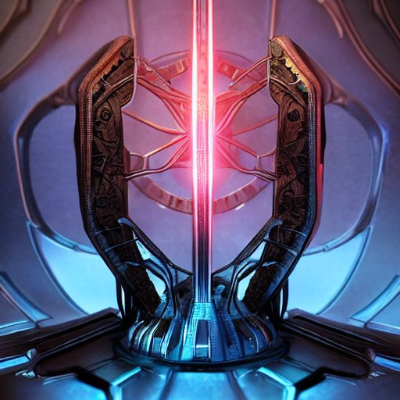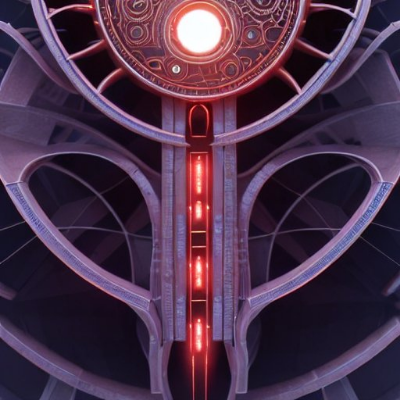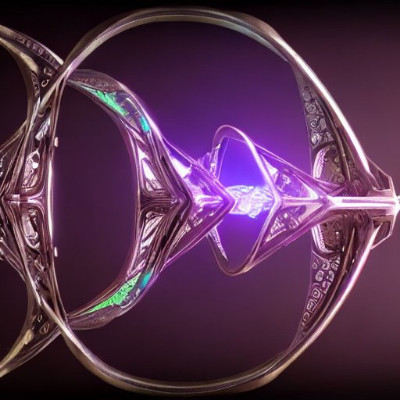TE HUNGA WAI TAPU: DR TE HUIRANGI WAIKEREPURU, TE URUTAHI WAIKEREPURU, IAN CLOTHIER, JO TITO, TE KAHU KIIWI HENARE & CRAIG MACDONALD
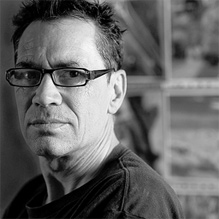
Title: Te Hunga Wai Tapu Project Site: 516 Arts
Project: The Wai project is a collaboration of many artists mentioned above. Ian Clothier is representing the team for this curriculum and will share the work through his personal experiences. The Wai (Maori for water, flow) project connects Maori cosmology, notions of integrated systems, and Western art and science in order to reinvigorate our understanding of flow and water across cultures and disciplines. It includes installation and video components, using technology to focus on the urgent need to engage with sustainable practices, given the environmental crisis. It covers the subjects of energy, ocean acidification and Maori and Diné (Navajo) approaches to water. Text panels are quad-lingual and include Maori, Spanish, Navajo and English.
Medium: Integrating art, science, technology and indigenous knowledge.
Bio: Ian M Clothier is an artist and founding Director of both Intercreate.org and SCANZ residency/symposium. Working in diverse collaborative media, projects have involved data loggers & web applications, robotics, socio-political data visualisation, micronation creation, augmented reality, motion sensors, online survey and installation. Projects have been selected for ISEA 2011 Istanbul, East West at Puke Ariki, New Zealand 2011; inter/place at Puke Ariki 2010; Taranaki culture at Puke Ariki 2009; ISEA 2009 Belfast exhibition; net.NET at The JavaMuseum; Finger Lakes Environmental Film Festival in the USA; ISEA 2006/01 San Jose exhibition; Graphite, University of Otago NZ; the International Festival of Electronic Art in Rio de Janeiro; Fair Assembly at ZKM; New Forms Festival in Vancouver; ISEA 2004 Tallinn exhibition; ReJoyce in Dublin; Wild 2002 in the Tasmanian Museum. He has had thirteen solo shows, been published in leading journals Leonardo, Convergence and Digital Creativity and has presented at conferences including Media Art History 2009 and the International Conference on Thinking.
STEM SKILLS: OHMS Law, Processing programming, Integrated electric circuits, Audio and LED outputs
Country: New Zealand
Artist Site: ianclothier.com, http://www.intercreate.org/2012/08/bus-garden
Organisation site: intercreate.org
Vimeo: http://vimeo.com/ianclothier
YouTube: www.youtube.com/ianclothier
Will Wilson
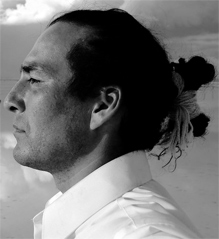
Title: Eyedazzler Site: Wheelwright Museum
Project: The eyeDazzler Project is a trans-customary collaborative expression which brings together innovation, traditional Diné design, 76,050 4mm glass beads, over 1000 hours of artistic labor, and a portal to another dimension.
Bio:Will Wilson is a photographer and trans-customary artist who spent his formative years living on the Navajo Nation. His photography practice centers around the continuation and transformation of customary Indigenous cultural practice, countering the ‘archival impulse’ embedded within the historical imageries of Native peoples. Through various methods of photography, Wilson combines digital technology, historic photographic processes, performance, and installation around themes of environmental activism, the impacts of cultural and environmental change on Indigenous peoples, and the possibility of cultural survival and renewal.
STEM SKILLS: Software Development, Manufacturing Processes, QR Code-image Processing, Photography
Country: USA
Artist Site: https://www.nativeartsandcultures.org/will-wilson
LYNN CAZABON & NEAL MCDONALD
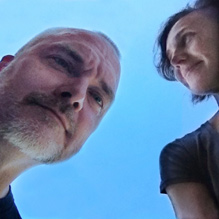
Title: Junkspace. Site: 516 Arts
Project: Junkspace, is a time and location sensitive animation and corresponding mobile application that superimposes two forms of waste, one earth-bound (electronic waste) and the other celestial (orbital debris), and three different forms of space: outer space, physical space and virtual space. Orbital debris is any man-made object in orbit around the Earth that no longer serves a useful purpose, left behind by decades of satellites and space missions. E-waste are the remnants of the many devices that fill our lives, transformed from objects of desire to trash through a self-perpetuating cycle of obsolescence. More
Medium: site-specific video installation and iOS App
Bio: Lynn Cazabon and Neal McDonald are artists based in Baltimore, Maryland who collaboratively create works combining data mining, animation and photography that seek to raise awareness about pressing environmental issues. They both are on the faculty of University of Maryland, Baltimore County. They each also work independently. Cazabon’s work focuses on what gets left behind in the wake of human progress. Her work often takes of the form of photographic images presented in the context of websites, videos, and audio and has been exhibited widely both nationally and internationally. McDonald considers his work in game development to be equal parts high art, entrepreneurship, and social commentary, exploring the ways that art exists (and is forced to exist) in America. He has developed multiple products for several different platforms including eight iOS apps.
STEM SKILLS: Data Mining, Programming languages, Satellite Technology, Communication Technologies
Country: USA
Project website: http://junkspace.org
http://www.youtube.com/watch?v=r29NiCRdBXc
Lynn Cazabon’s website: http://lynncazabon.com
Neal McDonald’s website: http://workly.com
TYLER FOX AND DPRIME RESEARCH
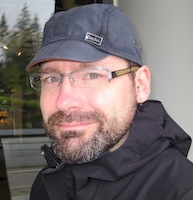
Title: DPrime Research Site: 516 Arts
Project: DPrime Research presents Biopoeisis and the Biolesce workshop. Biopoesis is a chemical computer. Biopoiesis is a series of experiments exploring the relationships between structure, matter, and self-organization, with a goal toward the development of autonomous computation and control systems in what can be described as a computational “primordial soup”. Biolesce brings together bioluminescent algae and physical computing in an ongoing series exploring the potential for the naturally occurring bioluminescence of the algae to be stimulated in a computing context. Both works challenge contemporary notions of technology and typical computing practices in their materials and in their hybrid practices inspired by art and science.
Medium: computational devices and electrochemical solutions
Bio: Tyler Fox is an artist and researcher with a broad interest in embodiment, technology, posthuman identities, and the discursive and material practices that produce categorical distinctions and differences, such as ‘art’ and ‘science’. Tyler received his MFA in Intermedia from the Elam School of Fine Arts in New Zealand in 2004, he is currently a PhD candidate at the School of Interactive Arts and Technology at Simon Fraser University.Carlos Castellanos is an interdisciplinary artist and researcher with a wide array of interests such as embodiment, cybernetics and systems theory, networks, phenomenology and artificial intelligence. He is exploring the aesthetics of information technologies and their effects on lived embodied human experience. This has taken a variety of forms and include scholarly writing, net art, interactive installation, sound, performance and techno-conceptual systems. Castellanos is currently pursuing a Ph.D. at the School of Interactive Arts and Technology , Simon Fraser University and splits his time between Vancouver and San Francisco.
Carlos Castellanos is an interdisciplinary artist and researcher with a wide array of interests such as embodiment, cybernetics and systems theory, networks, phenomenology and artificial intelligence. He is exploring the aesthetics of information technologies and their effects on lived embodied human experience. This has taken a variety of forms and include scholarly writing, net art, interactive installation, sound, performance and techno-conceptual systems. Castellanos is currently pursuing a Ph.D. at the School of Interactive Arts and Technology , Simon Fraser University and splits his time between Vancouver and San Francisco.
Steven Barnes holds a Ph.D. in Behavioural Neuroscience (Biopsychology) from the University of British Columbia (UBC) in Vancouver. He was a Postdoctoral Fellow in Neurophysiology in the Department of Epileptology at the University of Bonn, and a Postdoctoral Fellow in Interactive Arts and New Media at the School of Interactive Arts and Technology at Simon Fraser University. Initially trained as a visual artist, he currently teaches neuroscience and psychology at UBC. His academic expertise lies in the areas of learning and memory, psychiatric disorders, epilepsy, neuroplasticity and metaplasticity. Steven’s research interests currently shift between several topics including the history of neuroscience and psychology, biological mutualism, cybernetic systems and art-science collaboration. He continues to draw and paint.
STEM Skills: Electrochemistry, Physical computing, Study of bioluminescent Algae
Country: USA
Tyler Twitter http://twitter.com/tylersfox
Tyler Blog http://www.tylersfox.com/blog
DPrime website https://isea-archives.siggraph.org/person/tyler-fox/
NEIL MENDOZA AND ANTHONY GOH
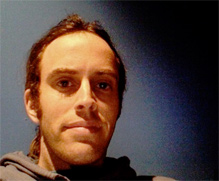
Title: Escape. Site: 516 Arts
Project: This installation is a collaboration of two artists. Neil Mendoza will represent the team, and share with you the project for this curriculum. Escape takes familiar, often stressful and annoying devices, and creates an alternate reality that uses disposable unwanted phones and unwanted noises and turns them into something beautiful. Each bird consists of a load of broken phone junk. The working phone communicates via serial to a device that then decides how the bird should move, when it should answer calls (from the public or other birds) and when it should make calls.
Medium: mobile phones, tree, Arduino
Bio: Neil Mendoza is an artist from the UK who uses digital and mechanical technology to bring objects and spaces to life. His work has been displayed at the Science Museum, The V&A, Watermans, PICNIC Festival, The AND Festival, The Nottingham Playhouse, BBC Big Screens and The Museum of London, among others.
STEM Skills: Arduino programming, electronics, motors and sensors
Country: England
http://www.neilmendoza.com/
http://github.com/neilmendoza
http://twitter.com/neilmendoza
http://vimeo.com/neilmendoza
YULIA PINKUSEVICH
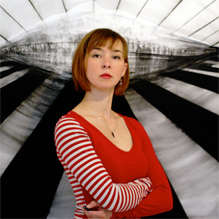
Title: Polyscape Site: 516 Arts
Project: Polyscape is a “floating island” made of recycled polypropylene plastic, the material used to make disposable bags and drinking bottles. The suspended, kinetic piece mimics the motion of water and undulates when it detects human motion. It comments on the Great Pacific Garbage Patch, a.k.a. the Pacific Trash Vortex, a floating island of ocean debris made of plastic, estimated to be 100 million tons and twice the size of Texas.
Medium: Recycled polypropelyne, aluminum rings. DC motor, monoillament
Bio: Yulia Pinkusevich is an interdisciplinary visual artist. Born in Kharkov, Ukraine (former USSR) she holds a Bachelors of Fine Arts from Rutgers University and a Masters of Fine Arts from Stanford University. Yulia has been awarded residency grants from Cite International Studio in Paris, Headlands Center for the Arts, Redux Art Center, Goldwell Open Air Museum and The Wurlitzer Foundation. She received The San Francisco Foundations 2011 Phelan, Murphy and Cadogan Fellowship in the Fine Arts as well as Stanford University SiCA’s Spark and ASSU Grants. She has exhibited primarily in New York, Santa Fe and San Francisco. She currently resides in Palo Alto, California.
STEM SKILLS: Manufacturing Processess, CAD (Computer Aided Design, Electronic Circuitry, Arduino Programming
Country: USA
www.yuliapink.com
HECTOR LEIVA
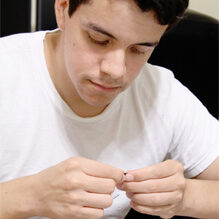
Title: The Matter of Memory. Site: Abq Museum and 516 Arts
Project: The Matter of Memory is a free, custom app using smartphone GPS tracking that allows anyone to submit a 3-minute audio recording tethered to the location in which it is created. Others are able to listen to the recording when they are within 100 feet of origin point of that recording.
Medium: ongoing custom Smartphone application
Bio: Hector Leiva is a computer and network based artist who uses video, installation, and software applications to address themes of alienation, identity, and the construction of memories. He received his MFA in Photographic and Electronic Media from the Maryland Institute College of Art in 2011.
STEM SKILLS: GPS technologies, Processing languages, Arduino programming
Country: USA
http://hectorleiva.com
ALYCE SANTORO
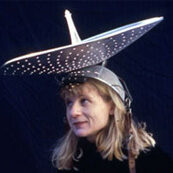
Title One: Sonic Fabric: The Universe is Made of Sound Site: Downtown Block Party
Title Two: Universal Raisin Cake Theory Site: 516Arts
Projects: SONIC FABRIC is an audible textile woven from cassette tape that has been recorded with a range of sounds and music collected from around the world. Examples of works made from this material are used as PHILOSOPROPS (a descriptive term invented by Alyce) to start discussions about the properties of sound, the inherent sonic nature of matter, and ways that sound can be made visible.
In our workshops, we listen to and discuss the sounds contained in various editions of SONIC FABRIC, and demonstrate its audible properties using a “reader” made from a hacked personal cassette player. We introduce ways that sound has the power to physically affect matter using simple, elegant examples from cymatic experiments, pointing out the often-overlooked everyday sounds that surround us (for example, the US electricity grid is tuned to 60 Hz – the hum we hear is the musical note B – the European grid is 50 Hz, or a G). We discuss ways that sound and music can influence feelings and emotions. We talk about intuition, imagination, and the cultivation of creativity and The final product will be a “musique concrete” sound composition made from looped and layered samples collected by the students and presented at the Downtown Block party on Education Day.
The Universal Raisin Cake Theory is an artists’ book in the form of a cake mix box inspired by a passage from Peterson’s Field Guide to the Stars and Planets: Hubble’s observations that the most distant galaxies are receding from us faster than closer galaxies can be explained if the universe were expanding in a way similar to the way a giant loaf of raisin bread rises. If you picture yourself as sitting on a raisin, all the other raisins will recede from you as the bread rises. Since there is more dough between you and the more distant raisins, the dough will expand more and the distant raisins will recede more rapidly than closer ones. Similarly, the universe is expanding. We have the same view no matter which raisin or galaxy we are on, so the fact that all raisins and galaxies seem to be receding doesn’t say that we are at the center of the universe. Indeed, the universe has no center. (We would have to picture a loaf of raisin bread extending infinitely in all directions to get a more accurate analogy.)– from A Field Guide to the Stars and Planets by Donald H. Menzel & Jay M. Pasachoff, 1983
The “book” contains text excerpted from Peterson’s Field Guide to the Stars and Planets, explaining how the expansion of the universe is akin to a giant loaf of raisin bread rising, each raisin a galaxy embedded in the dough. The “book” was printed in an edition of 1000 with a grant from Women’s Studio Workshop in 2005. At 516Arts, visitors will be invited into a “reading room” where they are invited to lounge on giant raisin-galaxies, imagining themselves floating through the expanding universe while reading the “book”.
Medium: Universe is Made of Sound: digital sound recording
Universal Raisin Cake Theory: offset printed poster/book in an edition of 1000, 5 vinyl giant raisin bean-bag chairs, star projector.
Bio: Alyce Santoro is an interdisciplinary conceptual and sound artist whose work is deeply informed by science and philosophy. Drawing on a background in biology and scientific illustration, she creates “Philosoprops” using video, assemblage, text, and live performance to draw parallels between seemingly disparate fields and to spark dialog about holistic approaches to challenges facing the environment and society. Alyce is the inventor of Sonic Fabric, an audible textile woven from recorded audiocassette tape, and is the founder of several campaigns for social action including the Synergetic Omni-Solution, OCCUPY EVERYWHERE, and the Dialectic Revival. She refers to her studio in far west Texas as the Center for the Obvious and (Im)Permacultural Research.
STEM Concepts: Astronomy, chemistry, quantum physics
Country: USA
http://www.alycesantoro.com/
https://www.alycesantoro.com/sound-visual/sonic-fabric
http://www.alycesantoro.com/preparedear.html
NETTRICE GASKINS AND LAURIE MARION
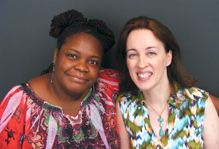
Title: AROS: Augmented Reality Mural Site: Wells Park Community Mural Project
Project: Augmented Reality in Open Spaces (AROS) explores culture and creative technologies in the open spaces of Albuquerque by working with local youth to create a mural that links to content on the web via Argon, an Augmented Reality browser developed at Georgia Tech. Participants use Culturally Situated Design Tools (CSDTs) developed at RPI to learn standards-based math and computing as they simulate designs that are combined to produce an outdoor mural. The experience of interacting with the mural through touchscreen, camera-enabled mobile devices blends virtual and physical spaces and results in a greater appreciation for STEM learning, culture and art.
Medium: Latex and acrylic paint, Augmented Reality frame markers and Argon browser.
Bio: Nettrice Gaskins and Laurie Marion are pursuing graduate degrees in digital media at the Georgia Institute of Technology. They have collaborated on projects that teach mobile augmented reality and mural design at the high school level. The resulting art pieces embody the values of participatory design and inclusive cultural practices.
Nettrice Gaskins is a Ph.D. candidate and researcher in the Experimental Game Lab at the Georgia Institute of Technology. Her art piece designed in Second Life entitled “Afrofuturist Multiverses and Beyond” was on exhibit in the IBM exhibition space for two months in 2010. She regularly contributes blog posts detailing trends in Afrofuturism for Art21. For her doctoral research she is exploring how culturally situated design can be a bridge to STEM learning for underrepresented minorities.
Laurie Marion studied music at the North Carolina School of the Arts as a teenager, earned a Ph.D . in philosophy in 1996, and began studying digital media at Georgia Tech in 2010 to expand her philosophical and artistic practice into the digital realm. She is currently working on a mobile augmented reality tour of a neoclassical building in Atlanta and designing a threshold object in the Experimental Television Lab at Georgia Tech.
STEM Skills: Geometry, ethnomathematics, electromagnetic waves, computer vision, web programming
Country: USA
http://pinterest.com/nettrice/aros-at-isea2012
http://augmentedcloud.wordpress.com/2012/07/26/at-the-midway-point
http://www.youtube.com/watch?v=3oqOnBvXnS4
https://github.blairmacintyre.me/site-archive/ael-2015/research/arweb/kharmakmlhtml-augmented-reality-mobile-architecture/
https://ar.qualcomm.at/
https://sites.gatech.edu/augmentedenvironments/
https://marionmediadesign.com/
Here are links from the Wildstyle Simulation for Linden Endowment for the Arts:
http://www.flickr.com/photos/nettiebeatrice/sets/72157626770859365
http://www.youtube.com/watch?v=tQQPJH7lWAU


